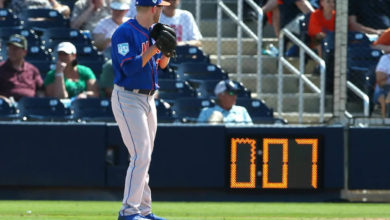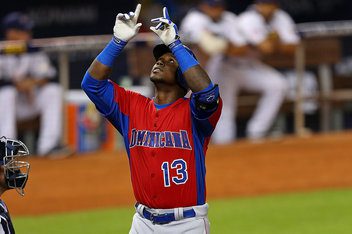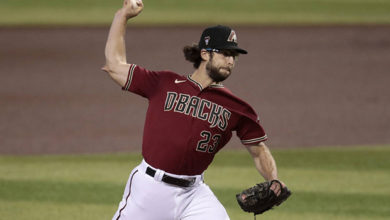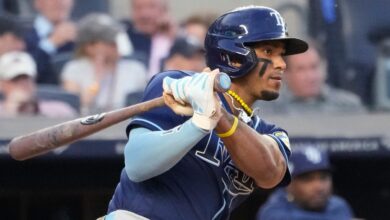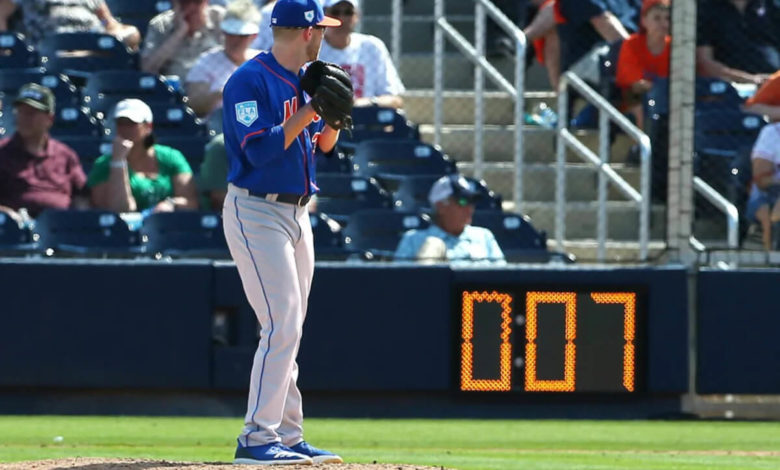
SCOTTSDALE – With all things new and creative, the rules adopted by Major League Baseball, and implemented this weekend during initial spring training games, result in positives and negatives.
At the start here, the negatives appear minor and that includes a period of adjustment. From an obvious perspective, pitchers must adapt to a pitch clock and hitters adapt to an immediate command to stand in the batter’s box.
The overall desired effect is more scoring and less time of game. The latter seems to be clearly within reach and the game of baseball, at least at the major league level going forward, is changed in a rather profound way.
After the opening two games this spring, the time of game was down nearly 45 minutes from the average of a year ago. Plus, the desired “pace of play” was achieved and likely to be refined.
All of which puts a responsibility on pitchers to deliver within a prescribed time and hitters ready in the box. In the first two games this spring, the time of game was 2:29 for a match between Texas and Kansas City and 2:33 for a game between San Diego and Seattle.
Among starters, the pitch clock does not appear a burden. Where the difference could be felt is within relievers and their collective ability to walk around the mound and delay a specific delivery.
“I tend to work pretty quickly and so I didn’t notice any change,” said Kansas City right-hander Dan Lynch, who started the Royals first pre-season game against Texas on Feb.24. “I glanced at the clock a couple of times and we always have to make adjustments. So far for me, this will not be a big deal.”
Whether a pitcher must make profound changes will likely depend on their style. Clearly, the pitch clock has altered the landscape of the game and forced some to raise their attention level.
“No, the pitch clock did not affect me, but the pace is quicker than before, that’s for sure,” said Arizona right-hander Kyle Nelson who started the Diamondbacks’ spring opener Saturday against Colorado. “I’ve never been a super slow worker, but it is a little different when you’re forced to go fast. Seems like the hitters were a little rushed, too. This will take everyone a little time to adjust.”
On the diamond … the Diamondbacks dropped their initial game of the spring to the Colorado Rockies 12-5 before 10,183 at Salt River. Nelson started and faced nine hitters. He allowed four hits, four runs, all earned and walked one. For the effort, Nelson, who is fighting for the one remaining spot in the rotation, threw 36 pitches and 22 for strikes. “Felt good out there, but definitely have some stuff to work,” Nelson said after his outing. “Overall, arm feels good, body feels good. Fast ball command felt good and threw some of-speed pitches I really like. There’s still consistency which could be better.”
In the trainer’s room … infielder Evan Longoria continues day-to-day. Suffering from illness, the Diamondbacks have held out the veteran until the opening of spring games. Field manager Torey Lovullo reported Longoria is taking batting practice and the manager expects Longoria to play in games within a few days … outfielder Kyle Lewis remains sidelined with a left knee issue. Sporting a brace, the Diamondbacks are holding Lewis back for a few days and Lovullo told reporters before Saturday’s spring opener that Lewis’ situation is now handled with precaution … shortstop Nick Ahmed is out for likely the next week with a forearm strain in his non-throwing arm. “Because of his right shoulder injury situation in 2021, I’ve became hypersensitive to depth,” Lovullo admitted. “Yes, I’m going two or three deep.”
Next … The Diamondbacks continue their spring slate on Sunday with a game against the Padres in Peoria. Lefty Tommy Henry gets the ball from Lovullo while Bob Melvin will go with veteran right-hander Julio Teheran. Then on Monday, Arizona scheduled two games. There’s an afternoon contest with the Cubs and a night game against West Virginia University, both at Salt River.


